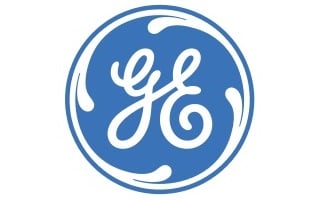Infrastructure
What This Appliance Unit Sale Really Means for GE
Published:
Last Updated:
General Electric Co. (NYSE: GE) is doing everything that it can to get its outside view reclassified with the investing community. GE is trying to become an industrial conglomerate so that it can have a higher earnings multiple valuation. The first move was to ditch NBC in media, then to ditch its consumer finance in the Synchrony IPO, and now the latest is to ditch its appliances unit. Source: Wikimedia Commons
Source: Wikimedia Commons
Now there are indications that the long-time goal of getting rid of the appliances unit may be close at hand at General Electric. A Reuters report indicated that GE is close to selling the appliances unit to Electrolux in Europe. The price tag — roughly $2.5 billion. What 24/7 Wall St. wants to show is what exactly this would mean for the new direction of GE.
Before investors get overly excited here, 24/7 Wall St. would caution readers that GE was looking to shed this century-old unit before the recession in 2008. If this transition does take place, consumers may no longer see the GE logo on ovens, stoves, washers and dryers, refrigerators and more.
READ ALSO: GE Is Actually Coming Back in Favor Again
News first broke in July that GE was interested in selling the unit, then came word in August that GE had confirmed it is interested in off-loading this unit. Now it appears as though the GE of the last generation is potentially going to be a very different GE for the next generation.
GE’s appliance business is still profitable. Unfortunately, the unit’s margins and how it is evaluated by outside investors are just not where the company wants to be. When we first saw that GE may be interested in selling, we saw that the appliances unit had close to $380 million of operating profit (see below) — only about 2% of the company’s entire profits.
As a reminder, GE tried to exit the appliances business once before. That belligerent recession got in the way and stayed in the way.
The big question is what another $2.5 billion or so would do for GE. The market cap is $260.5 billion. Another question is whether GE can offload any debt along the deal, and how it will impact the balance sheet.
GE’s total revenue in 2013 was $146 billion. GE’s most current annual report showed a combined revenue in the “Appliances & Lighting” as $8.338 billion in 2013 and $7.967 billion in 2012, with “Appliances & Lighting” having $381 million and $311 million in segment profits for each year. The company’s total industrial segment revenue and income (including appliances) was $103.6 billion and $16.2 billion, respectively, in 2013.
GE’s 2013 annual report also signaled that its portfolio goal was to be 70% in key infrastructure and 30% in specialty finance, with a much leaner structure. GE shares were flat on late Thursday at $25.95, but the stock has been stuck around the $26 mark since mid-August. GE’s 52-week range is $22.96 to $28.09, and its consensus analyst price target is now $29.80.
READ ALSO: 15 Companies With Over $1.2 Trillion in Backlog Orders
Take the quiz below to get matched with a financial advisor today.
Each advisor has been vetted by SmartAsset and is held to a fiduciary standard to act in your best interests.
Here’s how it works:
1. Answer SmartAsset advisor match quiz
2. Review your pre-screened matches at your leisure. Check out the
advisors’ profiles.
3. Speak with advisors at no cost to you. Have an introductory call on the phone or introduction in person and choose whom to work with in the future
Take the retirement quiz right here.
Thank you for reading! Have some feedback for us?
Contact the 24/7 Wall St. editorial team.